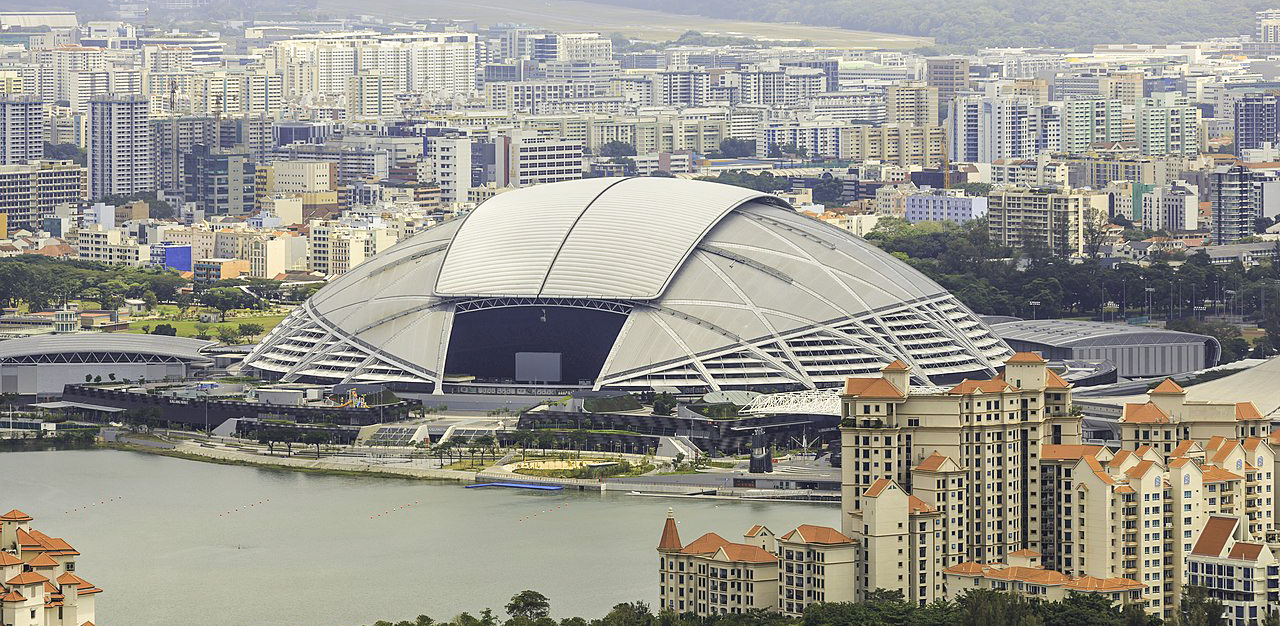Once the source of national pride and joy, the Singapore National Stadium has struggled to regain its past glories since its reconstruction as part of the billion-dollar Singapore Sports Hub, in 2014. TheHomeGround Asia seeks views from a home-grown athlete-turned-businessman and a locally-based football events promoter to find out how the National Stadium can become the centrepiece of Singapore life once again.
Comprising several venues including the National Stadium and leisure retail the Kallang Wave Mall, the Singapore Sports Hub envisioned itself to be the premier venue in Southeast Asia for sports, entertainment and lifestyle when it was completed and commenced operations in 2014.
Despite hosting high-profile, world-class international events and the 2015 biennial multi-sport Southeast Asian Games, the billion-dollar facility has struggled to live up to its promise of being the life of Singapore sports and entertainment.
This was a far cry from the bygone decades where the old National Stadium and Malaysia Cup football were synonymous with each other. Then, Singaporeans would snake up long queues that lasted hours and pack the ground, enlivening the atmosphere while soaking up the heroics of the national footballers on the pitch.
A number of those in the stands during that period were eventually inspired to follow their heroes and make their own marks in the sporting arena. One of them was former Singapore international footballer Sasikumar Ramu.
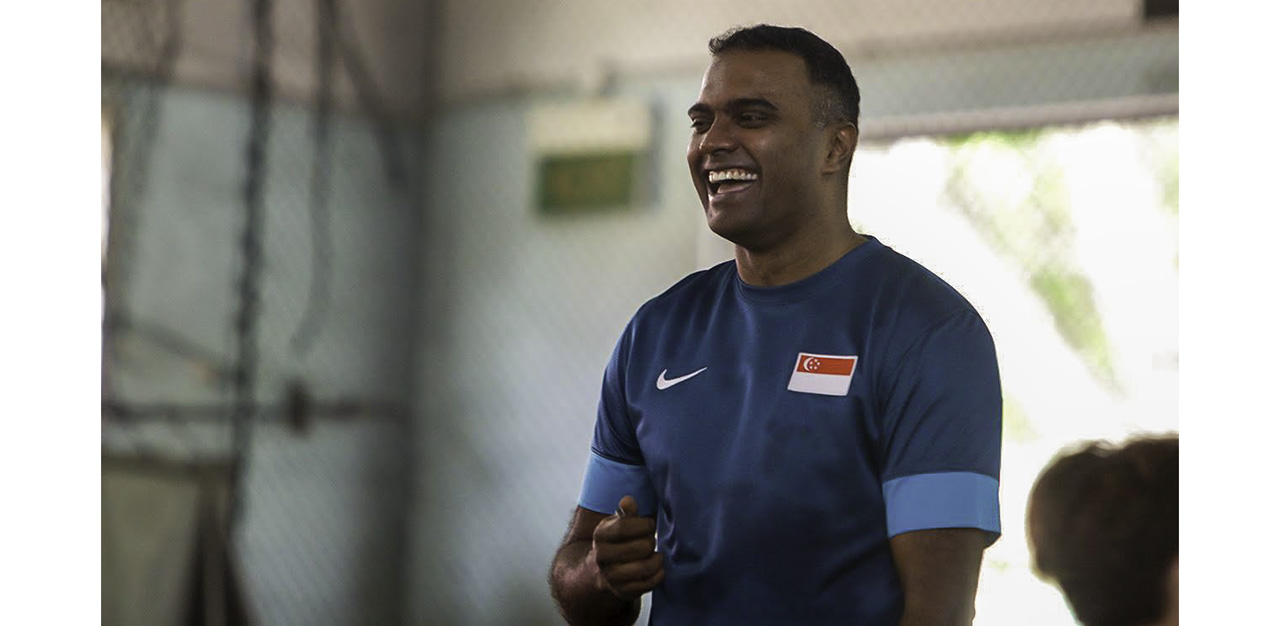
The 46-year-old entrepreneur fondly recalled how his band of Yishun childhood friends would journey to the hallowed sporting ground in his younger days.
“I grew up in the era where the only football we watched was the Malaysia Cup,” he says. “I still remember very clearly when we got out from the Kallang train station, it was a sea of people that were heading towards the National Stadium.
“As we walked, I would always tell my neighbourhood pals that one day I would come here to play and they would pay to watch me play. My friends used to joke and tease me, ‘You are not even playing in our neighbourhood team, how are you going to play at the National Stadium?’
“Just going into the stadium and watching my Malaysia Cup heroes play, l often wondered how nice it would be if I could don the national jersey.”
He would eventually prove his friends wrong and fulfil his dreams of gracing the National Stadium several times as a professional footballer.
“Every boy growing up in my year, that was all we wanted to do (then),” he adds. “It was in my mind that I would wear the national colours and play in the sacred ground of local football.
“To be able to play in front of such a crowd was a special feeling. I even scored a goal for the Olympic team in the Philips Tournament (in 1995).”
He chuckles on how his friends eventually turned up to watch him perform at the ground, “It was a bit of sweet revenge as my friends did pay to see me play!”
Into the modern arena
The eventual demolition of the old National Stadium in 2010 and construction of the Sports Hub ushered Singapore sports and entertainment into the modern era.
With the state-of-the-art infrastructure, it has become a draw for international events to be staged here, from the pre-season International Champions Cup football matches that involved world-class teams to outdoor performing acts such as Jay Chou, BTS and Coldplay.

For Ian Holahan, the director of football event promoters World Football Legends, the Sports Hub is comparable to some of the leading stadiums around the world.
“The facilities at the National Stadium are excellent, from the changing rooms to the seats and lighting, and it is very accessible via public transport,” says the 56-year-old permanent resident, who has been living in Singapore since 1996.
“I have been to a number of stadiums in Asia and not a lot of them can be compared to here. Singapore should be proud to be among the best.”
Mr Sasikumar feels the Sports Hub has created a completely new experience for sports and entertainment event goers, especially with the addition of several features previously not seen in the old National Stadium.
“Stadiums have been a big part of my life, so going to a massive stadium like that, there is always going to have a special feeling,” says the 1998 Tiger Cup final match winner.
“When you look at the size of the Sports Hub, you go in there and go ‘Wow!’ This is the place where I used to play and now I am in this spanking new stadium.
“It is very different to what I used to see as a young boy and player. The surroundings are different with the facilities with a shopping mall, the corporate boxes and the way you are seated.
“I am lucky enough to have brought my boys to watch a few games and been hosted in corporate boxes before.”
The awe was evident even among sportsmen who have seen it all in their travels around the world. The retired international professional footballers were amazed at the surroundings when they played veteran football matches at the National Stadium.
“The legends love the facilities,” says Mr Holahan, who has organised a handful of veteran football fixtures since 2016. “For some, it is the first time they have ever played in a stadium with the roof (the unique feature of the National Stadium) closed.”
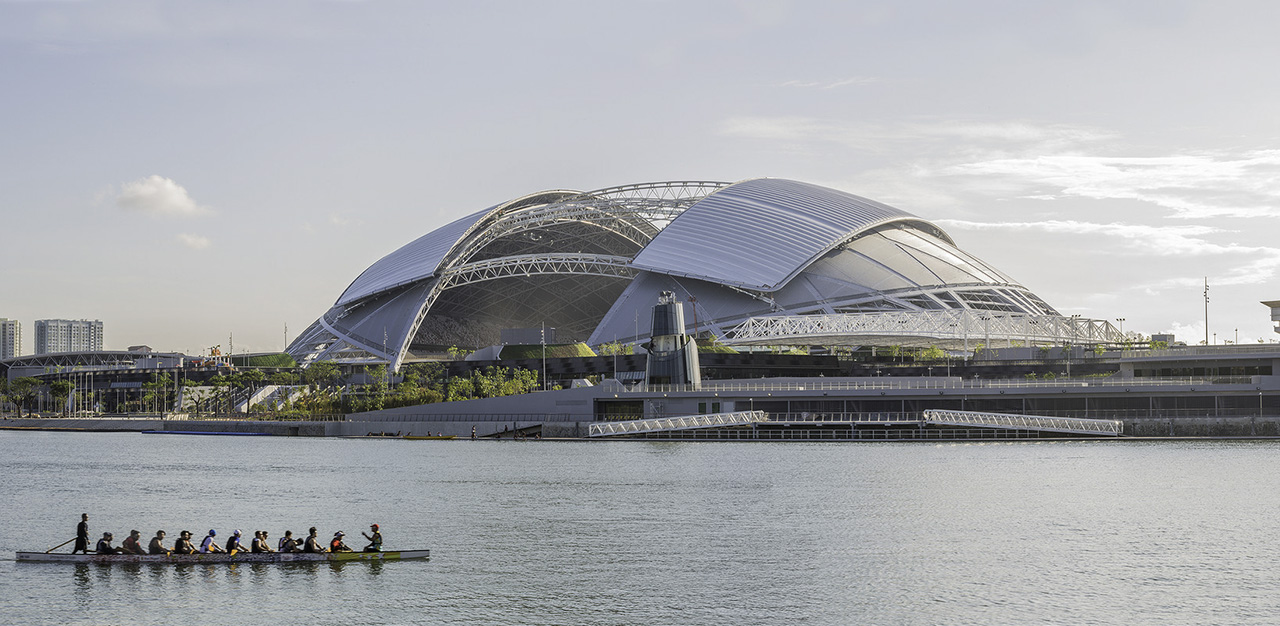
Who pays for the billion-dollar stadium?
While the grandeur of the state-of-the-art Sports Hub has seen world-class international acts from the sports and entertainment sectors strut their stuff, its modernisation has come at a huge financial price.
Constructed at a cost of over a billion Singapore dollars, it is the sporting world’s most expensive public-private partnership (PPP), which is a collaboration between the government and private sectors where the former’s project can be realised with funding from the latter with strings attached.
Since its completion, the Sports Hub has been criticised for being a sellout, particularly for sports romantics who lamented on social media that the National Stadium in particularly is no longer just a venue for play, but also one for concerts.
Mr Sasikumar, who is presently the Group Chief Operative Officer for multinational consultancy group Red Card Global, sympathises with the management’s decision to have the entertainment concerts to co-exist with sports as a venue there.
“The Sports Hub is run as a business,” he explains. “It was an option for the government to let people who know how to run a stadium to do so, which was how the PPP came about. It was the smart model and only option available.
“Wearing my commercial hat, the concerts from the likes of Coldplay are going to bring in more money and I get it. The economics (for event management at modern stadiums) work that way.”
However, he feels that now is possibly the time to revisit this management model as the National Stadium is the only venue in Singapore that can handle both large-scale sporting and entertainment events.
“We only have one 50,000-seater stadium,” he continues. “Say, for example, in Malaysia, if there is no Shah Alam Stadium, there is still Bukit Jalil and the new Sultan Iskandar Stadium in Johor (as alternatives for events).
“For people who are looking at the stadium as the home for sports, what will be the priority if a FIFA World Cup Causeway Derby qualifier against Malaysia and a Jay Chou concert are scheduled on the same day?”
Mr Sasikumar also observes how the PPP financing model has impacted the wallets of the layperson in Singapore who wants to watch sports and entertainment events in Singapore.
“In those days, we could buy the S$7 and S$1 tickets to watch a football match while a family of four or five could enter for less than S$50,” he adds.
“With the current stadium, the costs are passed down to the users and the accessibility is different. Tickets are way much higher than what it used to be. It is probably a quarter of a monthly salary to bring a family of five to watch Arsenal or Juventus.”
“It kind of puts people away because of the affordability factor, so it is time to revisit the PPP model.”
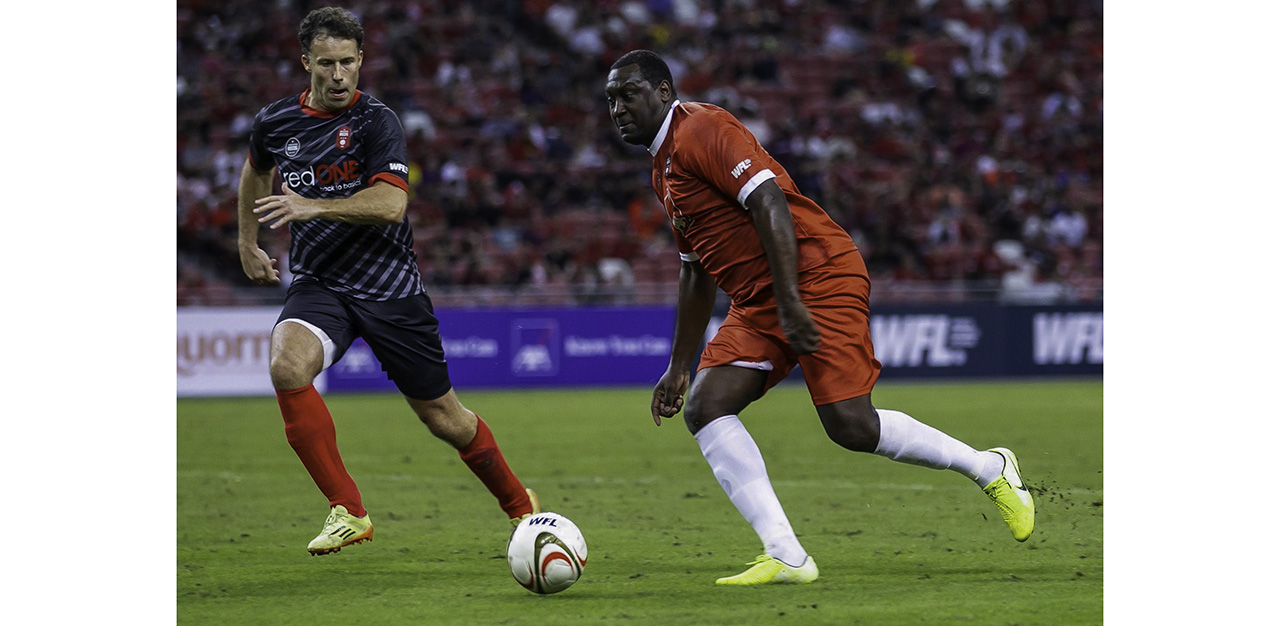
No Sports Hub signature events
Despite hosting several notable events at the Sports Hub, including the WTA Finals and International Champions Cup, there is a distinct lack of a sustained flagship event that is synonymous with it.
It contrasts starkly with the association of the English FA Cup with the old and new Wembley Stadium in London, the world-renowned Hong Kong Rugby Sevens with the Hong Kong Stadium and, closer to home, the Malaysia Cup with the old National Stadium.
This fact is not lost with Mr Holahan, who cites his past match-going experience back in Britain: “What makes stadiums in Britain tick is usually a combination of the locality and the passion of the fans to support their local city,” he says.
Mr Sasikumar adds, “That is what every stadium in the world does, there is a marquee or flagship event that happens year-after-year.
“If you really think of what can fill the 50,000 seats at the stadium, and if you take away the concerts, it’s only football.”
The father-of-two believes part of the cause behind the lack of a sustained calendar of events, let alone a flagship one, at the Sports Hub is down to a lack of local event promoters.
“It is about the ecosystem,” he explains. “When you look at all the promoters in Singapore, whether it is for football, rugby or endurance events, we used to have a thriving market of home-grown sports agencies.
“If you look now, I can safely say that there is literally no local agency left. That part of the industry never grew and is now almost wiped out.
“Over the past decade and a half, we have eliminated that part of the business and now we are catching up again.”
Mr Holahan points out the need of the existing event promoters pitching their services to do their marketing right with a more sophisticated sports-watching populace in Singapore.
For major events at the Sports Hub, the London native believes time is needed to promote them so that the public is aware.
Referencing to how the 2019 international football matches involving the world-class Brazil national football team filled less than half-capacity despite the presence of global superstars Neymar, Roberto Firmino and Sadio Mane, he says, “Frankly, I think for this case, the organiser brought the match in very late.
“Being in the industry, I was not aware of it till about a month prior. The runway to raise awareness of the matches was very short.”
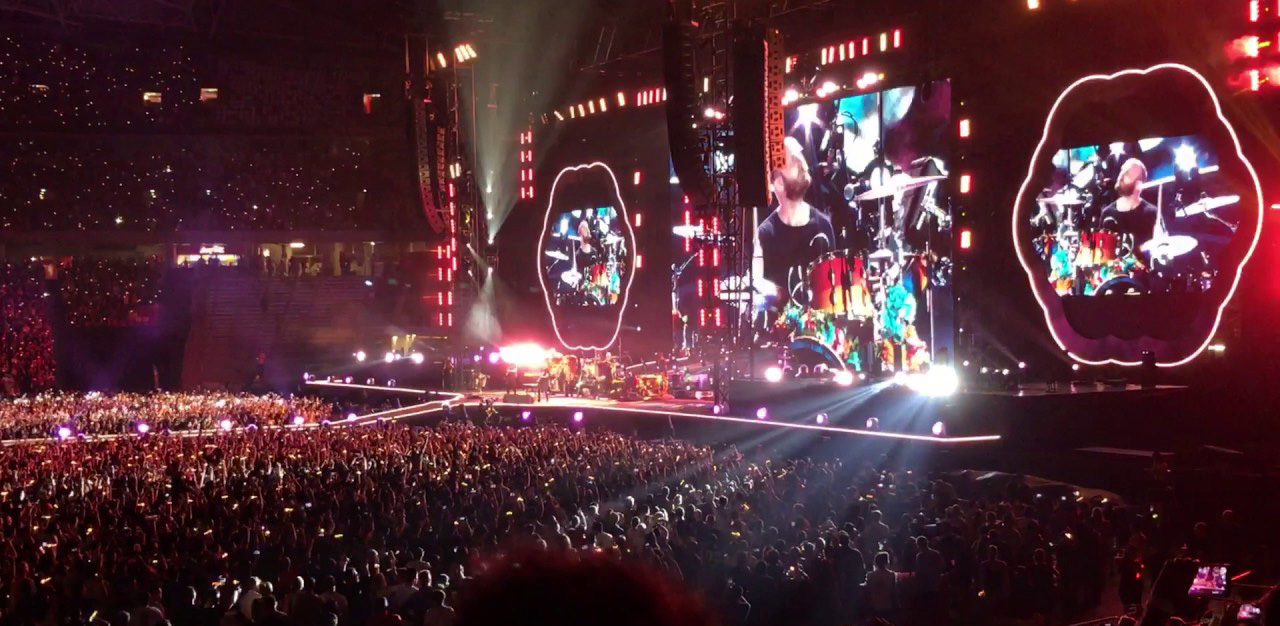
Post-pandemic realism and hopes
While the Sports Hub is lining up high-profile events for the second half of 2021 and beyond, the effects of the Covid-19 pandemic will continue to impact the available capacity for the venues in the short-term.
“Sports moving forward is going to be very, very different,” Mr Sasikumar cautions. “I will be very surprised if we are ever going to see a full-capacity stadium again.
“Ticket prices will have to go up. To go for a live event, you need to pay an arm and a leg unfortunately.
“If we are going to have half-capacity for an event, the audience present will have to pay the combined usual revenue for a full stadium for it to be sustainable.
“You cannot say that you halve the capacity, you are going to halve the ticket prices, the economics is not going to work that way. Even with the government subsidies, the prices are going to be at a premium.”
He adds that with the present travel and venue restrictions, it is challenging for the Sports Hub to attract a sizable crowd for events.
“With sports such as rugby, where the audience comes from all over the world, it is difficult as travel bans make it difficult for such fans,” he says.
“It is not going to be an easy job on how to fill seats in this climate. In concerts, there is no chance of people being allowed to be in close proximity with each other. Having a half-filled stadium won’t do it for international artistes.”
Mr Holahan admits the capacity limitations at the Sports Hub impacts the planning for his next event there while he remains optimistic on its viability as a premier sporting venue.
“I am aware that the Sports Hub has been implementing safe measurements to ensure the safe return of events,” says the organiser of veterans football events.
“I think the venue is ready and will still remain as a centrepiece for Singapore sports post-pandemic, but the capacity limit guidelines now prohibit large scale events.
“I am waiting for the capacity guidelines to be revised upwards from the government so that I can place my next event at the stadium.”
For Mr Sasikumar, changing the sports business model and reaching out to the grassroots are the ways forward to rejuvenate the Sports Hub.
Reinforcing on the need to revive the local sports marketing industry, he says, “If you really want to make the Sports Hub a vibrant place and bring this culture of sports, you need to talk about the ecosystem.
“Currently the burden is on the government to do every strata of events from top to bottom and they have to fund them. There is no private investment.
“The shark cannot be the water by itself, the whales cannot be the ocean by itself, it’s impossible. You need the smaller fish, you need the mid-sized fish. You need to look at it from a holistic perspective on who feeds off who, and who we can feed to make sure the pie gets better and the ocean gets healthier.”
Having witnessed the peaks and valleys of sports engagement in Singapore, Mr Sasikumar feels making a total effort to increase participation levels with grassroots events is a way forward to revive the local sporting culture and produce a vibrant environment at the Sports Hub and beyond.
“The Sports Hub is the apex of Singapore sports and we need the base,” he concludes. “We need to feed and field a lot of grassroots events.
“We are not tapping from 20 or 30 million people. The reality is, we have only five million people and from the demographics of the population today, a large segment has no interest in sports.
“We do not have a large base to work on, so we need to create seeding events all over the country to create the sporting culture. Then we build these upwards, with the hope that one day, (at least) one of them will fill the seats at the Sports Hub.”
